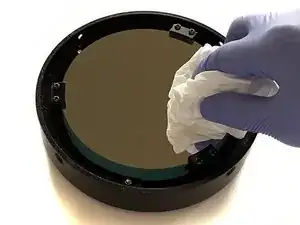
How to Clean a Celestron PowerSeeker 127EQ Telescope's Primary Mirror
Questi sono alcuni strumenti di uso comune usati per lavorare su questo dispositivo. Potrebbe non essere necessario ogni strumento per ogni procedura.
A telescope uses a system of mirrors or lenses (or both in tandem) to observe distant objects by their absorption, emission, or reflection of electromagnetic radiation. Telescopes may refer to various instruments capable of using various detectors to observe regions of the electromagnetic spectrum. Optical telescopes and binoculars are used for observational astronomy, pilotage, ornithology, reconnaissance, and viewing sports or performance arts.
It is believed that Galileo Galilei was the first person to use a telescope in 1609. Using a rudimentary telescope, he was able to observe mountains and craters on the moon, as well as the Milky Way galaxy. The first refracting telescopes were developed in the early 17th century in the Netherlands. The first telescopes used glass lenses and were generally used for astronomy and terrestrial applications like sailing and exploration. Reflecting telescopes were invented soon after refracting telescopes.
Optical telescopes increase the apparent size and brightness of distant objects by gathering and focusing light. These telescopes use one or more curved optical elements that are generally glass lenses and/or mirrors. Optical telescopes can be refracting, reflecting, or catadioptric. Refracting telescopes use lenses to form an image while reflecting telescopes use mirrors to collect and focus light. Catadioptric telescopes use mirrors and lenses to form images. An optical telescope’s ability to resolve details is related to the diameter (also called the aperture) or its primary lens or mirror.